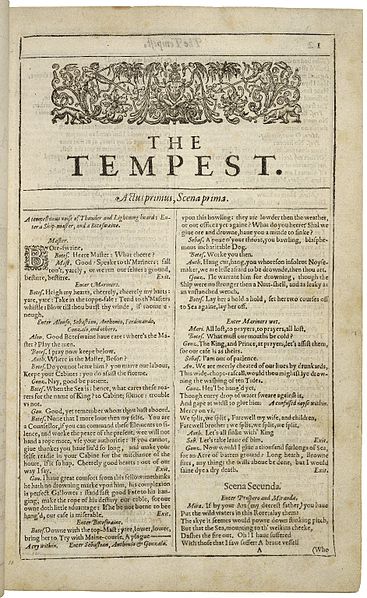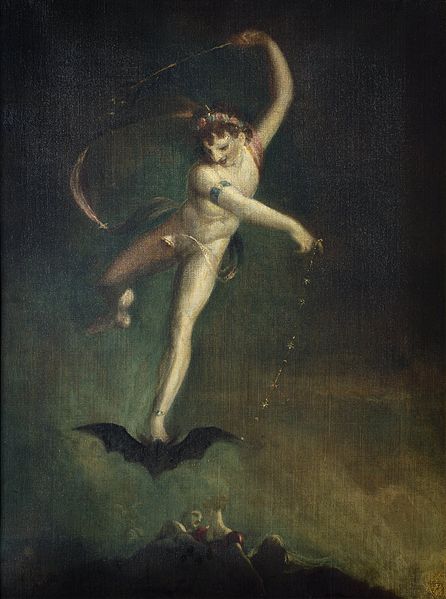The Tempest - William Shakespeare
61

"The Tempest" is one of William Shakespeare's final plays, often categorized as a romance or a tragicomedy. Here's a brief analysis of the play:
1) Magic and Supernatural Elements:
- Central to "The Tempest" is the theme of magic, embodied by the character Prospero. His magical powers are used to manipulate the events on the island, reflecting the influence of the supernatural in human affairs.

2) Island Setting:
- The isolated island setting creates a unique and controlled environment for the characters. The island becomes a microcosm where the power dynamics and relationships among the characters can be explored.

3) Colonialism and Power:
- The play touches on themes of colonialism and power dynamics, as Prospero's rule over the native Caliban raises questions about authority, exploitation, and the consequences of imperial rule.

4) Redemption and Forgiveness:
- "The Tempest" explores themes of redemption and forgiveness. Prospero's journey is one of self-discovery and transformation, leading to the ultimate act of forgiveness. The play emphasizes the power of mercy and reconciliation.

5) Father-Daughter Relationships:
- The relationship between Prospero and his daughter Miranda is a central focus. Prospero's protective nature and Miranda's innocence contribute to the emotional core of the play.

6) Shipwreck and Metaphor:
- The opening shipwreck serves as a metaphorical device, symbolizing the disruption of the natural order. The tempest represents the chaos that precedes a period of reflection, growth, and resolution.

7) Ariel and Caliban:
- The characters of Ariel, the spirit, and Caliban, the native inhabitant of the island, represent contrasting forces. Ariel is ethereal and serves Prospero willingly, while Caliban is more earthbound and rebels against his subjugation.

8) Theatricality and Meta-Theatrical Elements:
- "The Tempest" contains meta-theatrical elements, with Prospero using his magical arts to create illusions and manipulate the actions of the other characters. This adds layers of complexity to the play and invites reflection on the nature of theatricality.

9) Masque and Spectacle:
- The inclusion of a masque, a festive performance, within the play adds a spectacle element. This celebratory interlude reinforces themes of love and renewal.

10) Calming of the Tempest:
- The resolution of the play involves the calming of the tempest, symbolizing the restoration of order and the opportunity for redemption and forgiveness. The characters are given a chance for a new beginning.
11) Freedom and Servitude:
- The play explores the themes of freedom and servitude, with characters like Ariel seeking liberation and others, like Caliban, grappling with their subordinate positions.
12) Finality and Farewell:
- "The Tempest" concludes with a sense of finality and farewell, as Prospero renounces his magical powers and bids farewell to the audience. This farewell serves as Shakespeare's own valediction to the world of theater.
"The Tempest" is a rich and complex play that combines elements of romance, fantasy, and exploration of the human condition. Its themes of forgiveness, redemption, and the transformative power of art make it a fitting and thought-provoking conclusion to Shakespeare's dramatic works.

Here is audiobook ''The Tempest'' for those who have no time to read the play;
The Tempest by William Shakespeare Audiobook;
References;
- Auberlen, Eckhard (1991). "The Tempest and the Concerns of the Restoration Court: A Study of The Enchanted Island and the Operatic Tempest". Restoration: Studies in English Literary Culture, 1660–1700. 15: 71–88. ISSN 1941-952X.
- Avery, Susan (1 May 2006). "Two Tempests, Both Alike: Shakespearean indignity". New York Magazine. Retrieved 22 February 2015.
- Billington, Michael (1 January 1989). "In Britain, a Proliferation of Prosperos". The New York Times. Retrieved 20 December 2008.
- Blades, James; Holland, James (2020). "Celesta (Fr. céleste)". Grove Music Online (8th ed.). Oxford University Press. doi:10.1093/omo/9781561592630.013.3000000242. ISBN 978-1-56159-263-0.
- Brode, Douglas (2001). Shakespeare in the Movies: From the Silent Era to Today. New York: Berkley Boulevard Books. ISBN 0-425-18176-6.
- Bullough, Geoffrey (1975). Romances: Cymbeline, The Winter's Tale, The Tempest. Narrative and Dramatic Sources of Shakespeare. Routledge and Kegan Paul. ISBN 978-0-7100-7895-7.
- Carey-Webb, Allen (1993). "Shakespeare for the 1990s: A Multicultural Tempest". The English Journal. National Council of Teachers of English. 82 (4): 30–35. doi:10.2307/820844. ISSN 0013-8274. JSTOR 820844. OCLC 1325886.
- Cartelli, Thomas (1995). "After The Tempest: Shakespeare, Postcoloniality, and Michelle Cliff's New, New World Miranda". Contemporary Literature. University of Wisconsin Press. 36 (1): 82–102. doi:10.2307/1208955. ISSN 0010-7484. JSTOR 1208955. OCLC 38584750.
Thank you for reading!
You can complete great comment tasks at here. #thetempest #shakespeare #play #theatre #analysis #bookreview #audiobook

























